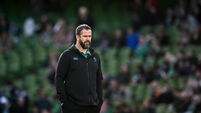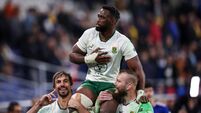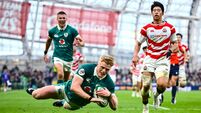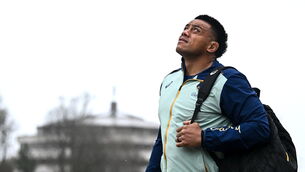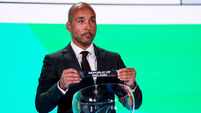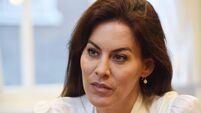Ronan O'Gara: Wales are a solid benchmark by which to judge Test credentials
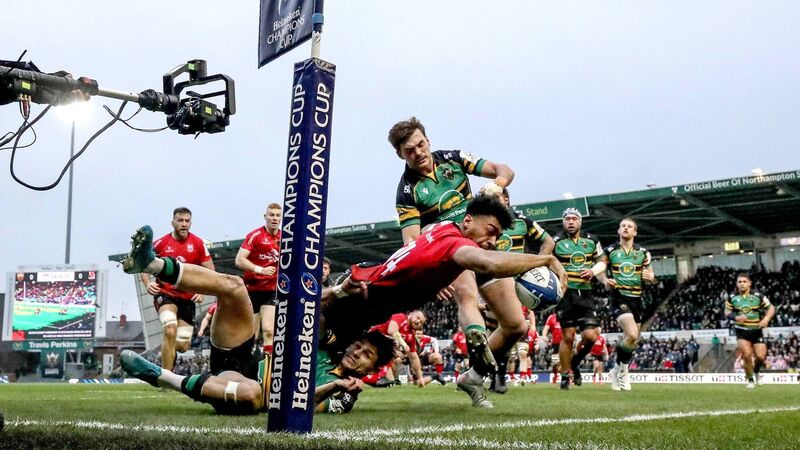
WING HOPE: Ulster's Robert Baloucoune scoring against Northampton Saints in Europe. Picture: INPHO/Dan Sheridan
It's not so long ago there were sniggers at the back of the room when Jules Favre said he had a dream to be part of France’s World Cup squad in 2023. Those with small minds and a smaller mindset said he was a snail going nowhere fast.
Jules wasn’t listening. He had his head down and was too busy working his ass off. He did his extras after training at La Rochelle, showed a brilliant attitude, studied his videos and pledged to get better. Last season when Levani Botia was suspended, we felt he had done enough to get his start in the centre. Against Racing 92 in the Top 14 semi-final in Lille, he didn’t just get stuck into Finn Russell, Gael Fickou and Virimi Vakatawa. He went after them with the same relentless determination he has gone after his dream to play for France.
This season, he is the joint top scorer in the Top 14 with seven tries. He can play 14 as comfortably as he can play 12, and guess what? He’s just been called into the extended French squad for the Six Nations by Fabian Galthie. And I couldn’t be happier.
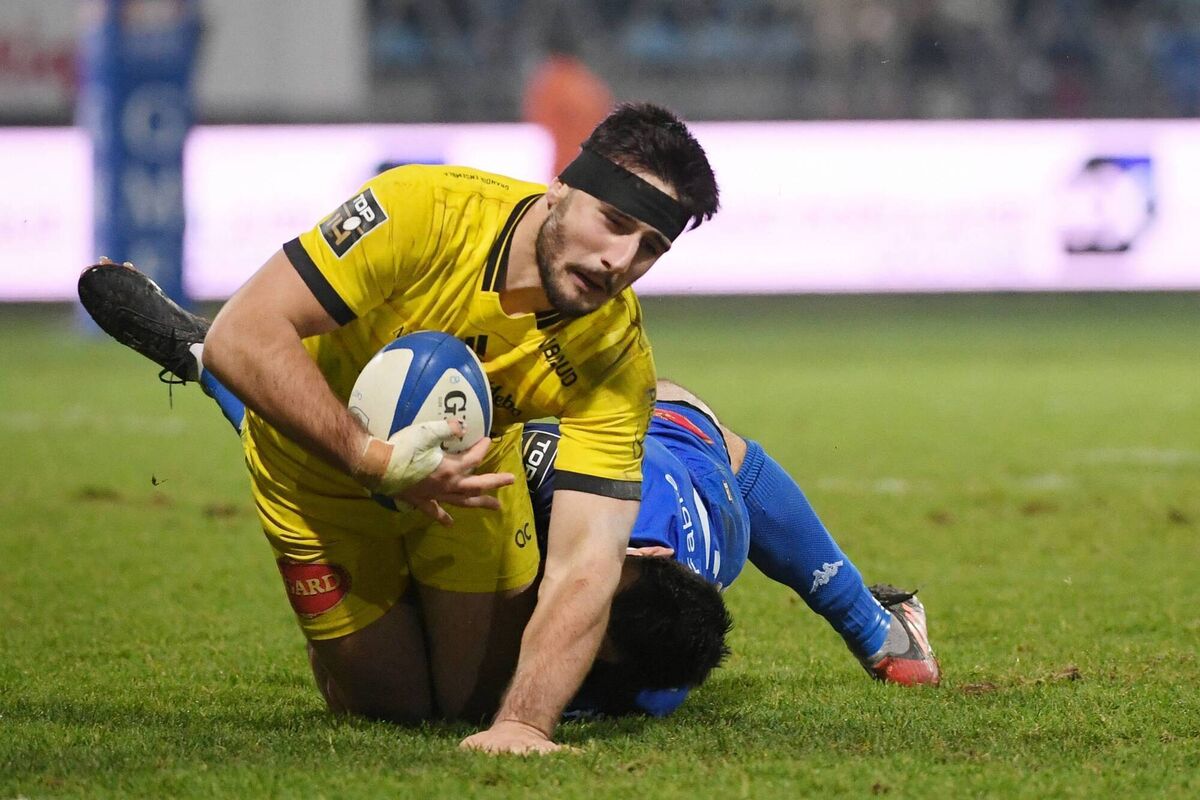
Favre is a relatable story for any one of Andy Farrell’s new recruits for the Six Nations. There are only two new caps in Ireland's 37-man squad but management will be secretly praying there are a few more Jules Favres in the group, undaunted players who ignore the naysayers and barge their way into the conversation for the rest of this year and 2023. In the debate with no right answer about priorities in the Six Nations the year before a World Cup, everyone looks for the positive takeaways.
Each of the five championship games is a chapter, all within the same tournament but each with different priorities and rhythms.
Warren Gatland stirred a bit of grudgery into Ireland-Wales renewals. For a while there, he was doing great things with the national side while the regions fell flat on their arses. Warburton would be anonymous for Cardiff, not looking like he was trying a leg and then, come the Spring, he’d be ripping up trees in red. Ireland will be receiving the Welsh on the opening weekend, and with that comes the lopsided pressure of having to win the home opener. An opening day loss at home is disastrous and lingers into some of the least comfortable Sunday mornings I can remember as a player. Ireland cannot afford to lose on February 5 for that reason over any other: it kills momentum stone dead, and there’s a trip to Paris a week later.
Here's the thing though, and it probably relates to Robert Baloucoune more than any other aspirant in green for the opener: A Wales game at home in a Six Nations is a solid benchmark by which to judge a player and measure his Test credentials.
The Ulster wing might start two of the summer Tests in New Zealand and be on the wrong side of the ball all night. That’s unfair and unreliable. It’s too glib to say he has ‘something’ but he certainly fits into the ‘different’ category. Ireland management are looking at winning the Six Nations, but right now, Baloucoune is not going to the World Cup. They need to be finding out whether he’s good enough to go or not.
Nobody is going to displace Hugo Keenan right now at full back. Keith Earls should come in for James Lowe for the good reason he is still the best winger in Irish rugby. The centre partnerships have the greatest capacity for change over the course of the tournament because of the quality of the applicants and the need to see how combinations work. I’ve been saying here for some time that James Hume has comfortably shown his ability to step up in Europe, so he’s ready for the next tier. The chances are he starts in the home game against Italy and not before.
It's fairly blatant Ireland has to change its cycle planning between World Cups and worry less about springs and Novembers in the interim. But the issue of a player’s pathway is a different discussion. This is about building blocks and setting a player up to succeed. You throw Hume in against France in Paris , where are you going after picking him up off his ass, literally and psychologically? He’ll probably need five internationals to get back to that point – suddenly you are turning into 2023 and a World Cup year. Aki, Ringrose and Henshaw will be tough to shift, so the Ulster centre is getting there incrementally whether he likes it or not.
The other interesting talking point is Tadhg Beirne. Does he start ahead of Iain Henderson in the second row? I am guessing Beirne is around 110kgs. In a world where scrum is king, that may be an issue. Coaches like their heavier locks to be on the tight head’s side of the scrum. Think scrummaging locks like Jean Kleyn, Bakkies Botha and our own Will Skelton. I’d venture Skelton is around five stone heavier than Beirne. However, there’s one huge get-out in an Irish context. Whoever the right-sided lock is, he’s packing down behind Tadhg Furlong.
Just like the front row is all-Leinster, so will be the back row. The strength of everything these days is in the little details, and if there’s a strong club unit playing together at Test level, it’s an important edge. The development of Andrew Porter continues ahead of his 41st cap. He was mapped out as a freak from an early stage, but he is delivering more as a rugby player than an athlete now. Combining his immense power with a good rugby brain.
However, the back row remains the Irish sweet spot. Effective at the breakdown, Doris, van der Flier and Conan can do damage on both sides of the ball. The importance, in a Welsh context, of keeping their openside (though Justin Tipuric is out) at bay is crucially important. Apart from scrum half, seven is probably the one position in rugby where you can match up man-on-man, denying running lines, lanes and space. So when Ireland have one of their centres on the ball, van der Flier will be looking to ensure his Welsh counterpart can’t mess with Ireland’s plan. And vice versa, when Wales have the ball, the Ireland seven is trying to get that key edge to get to the ruck, poach, or do damage at the back end of the tackle and mess up Wales ball. Remember, in this area Ireland will also have an ace up their sleeve in Peter O’Mahony.
Unless there’s a weather-dictated change, the Wales game will provide a fast-tempo, ball-in-play proper examination. The ball may not fly far in the early February air, but if it’s dry, it should be a thunderous opening game. Cold and crisp is one thing – cold and wet is bloody another!
Farrell might like the rhythm of Ireland’s schedule – home game then BANG, away to France. Home to Italy then BANG, away to England. And the tricky one at the end at home to Scotland. Ireland’s record at the Aviva is very strong, which counts for so much when you look at the data and statistics.
Bigger picture, though, the most positive aspect is the rebound there’s been since the rubbish in South Africa on the Lions tour. Now people are back in love with rugby, anticipating this great tournament, and putting last summer, in empty stadia, in the rearview mirror. Lions tours are incredibly special and the great tradition was poorly served last time out. There was absolutely zero special about the games and the occasions – the comparison with this spring will be like night and day.


